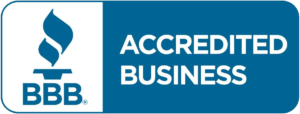Sometimes change is welcomed, but that isn’t always the case, and it’s certainly not the rule. In fact, change can be downright upsetting! Remember the perceived industry calamity of ’05. That fateful year we were forced to embrace our first new form-set since ’93. Oh, the humanity! But after a short, albeit vocal, uproar from the appraiser community we adapted….and ultimately were presented with new “changes” we could perseverate on, leaving only a subtle memory of the change-event we’d endured.
In all the years I’ve been involved in the collateral risk profession, I’ve never seen the entirety of the industry embrace a promulgated change, at least at first exposure to the change, whatever that change may have been. When the Enterprises required the inclusion of the Market Conditions Addendum (Form 1004MC), there was immediate consternation from the masses. Appraisers were forced to contemplate how much additional time the form would take them, and what the associated fee should be for the new offering. Many argued against the form’s content, specifically the fact it didn’t take into consideration year-over-year trends, but at the end of the day, we all got used to completing it, whether we wanted to or not.
As we approach a new year, we must be prepared for more changes that will impact appraiser practice, but we should do so with an open mind and optimistic attitude. For example, we expect to realize broader use of the bifurcated appraisal workflow throughout the new year. Based on presentation commentary by FHFA Acting Director, Sandra L. Thompson at the recent Mortgage Bankers Association Annual Conference, we can expect to see the incorporation of desktop appraisals into the guides for both Enterprises starting in early ’22. The FHFA’s announcement is representative of a change in our industry that we can and should embrace, as these moves afford appraiser professionals more opportunities to remain relevant and engaged.
Beyond impacts to workflow and product offerings, we can also expect to see new Enterprise forms in the not so distant future. Will it be a revisit of ’05? Will the masses collectively groan at the idea of having to learn how to manage their way through the latest iteration of a 1004 or 1073? Or instead, will we decide to see the new form requirements as a needed refresh; one meant to recognize the market shifts that have occurred since the last time the forms were updated. From my perspective, the fact that the Enterprises have taken on the challenge of ensuring the forms being used are sufficiently evolved is a great sign for the appraiser community. It means we’re still perceived as an important – and still relevant – participant in the mortgage lending ecosystem. Relevance being the key aspect by which I judge proposed or forthcoming change.
Remember, retained relevance doesn’t come without change, so why push back against everything and anything that looks or feels different from what once was? Instead, I’d suggest we save the energy we would have expended fighting against the inevitable changes we’ll be presented in the coming year and begin to employ a YES before NO attitude. Say yes to being adaptive, and welcome changes that continue to keep the appraiser professional engaged. It’s time we all come to grips with the fact that change will continue to be the only constant in the appraisal industry, so let’s expect it and embrace it!
Author: J. Petkovski, CVO

